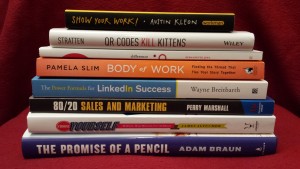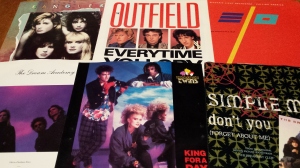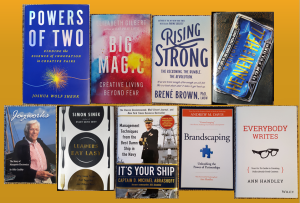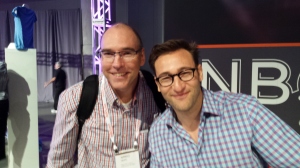Another year has come and gone, but not before I read my way through some inspiring and thought-proving books. Did these books top 2014’s list? I don’t know, but they’re just as awesome. I delved into creativity, a biography, leadership, and marketing. I took away a lot reading these, and I’m positive you will too. Without further ado, here are my favorite books of 2015.
My Favorite Books of 2015
4 Rules for Effective Communication
Three Resume Tips You Need To Use
Any job hunter will tell you that their resume needs updating. I’m no different. I don’t think I’ve ever been happy with it. One issue I have with my resume is that it doesn’t seem to represent who I am. It doesn’t sound like me or have my personality and it often ends up looking like a job description. I am more than a list of job responsibilities.
My Favorite Books of 2014
 After reading so many wonderful books in 2013, I wasn’t sure how 2014 was going to be able to compete, but compete it did. 2014 provided a treasure trove of insight, information, and realizations. There are some stellar pieces of work out there.
After reading so many wonderful books in 2013, I wasn’t sure how 2014 was going to be able to compete, but compete it did. 2014 provided a treasure trove of insight, information, and realizations. There are some stellar pieces of work out there.
The Reason to Explain the Obvious
Giving More Than What’s Expected
 Back in the days when record albums were issued in vinyl, I used to base my decision to plop down money for the entire album on whether or not I liked the B-side of the single. My thinking was, if the B-side was good the album would be good. If the B-side was good but wasn’t on the album, the album had to be great because they had more material than they could fit on the album.
Back in the days when record albums were issued in vinyl, I used to base my decision to plop down money for the entire album on whether or not I liked the B-side of the single. My thinking was, if the B-side was good the album would be good. If the B-side was good but wasn’t on the album, the album had to be great because they had more material than they could fit on the album.
Sales and Marketing Lessons from the Apple Guy
 One of the things I love most about fall is apple season. Apples are my favorite fruit and there’s nothing like having a crisp, fresh, delicious apple. Apple season only lasts about two months, so I appreciate it when it comes around.
One of the things I love most about fall is apple season. Apples are my favorite fruit and there’s nothing like having a crisp, fresh, delicious apple. Apple season only lasts about two months, so I appreciate it when it comes around.
Lessons from INBOUND 2014
Last week I joined 10,000 other marketers from around the globe in Boston for INBOUND 2014. It’s the largest conference of its kind for inbound marketers. Not only were there great speakers and the brightest minds sharing their expertise about marketing inside and out, but inspirational leaders as well. I’d like to share some lessons from three of these inspirational keynote speakers.
What I Did at WordCamp Milwaukee 2014
 WordCamp – the name conjures up an idyllic scene in the deep woods fighting off mosquitoes, making smores, and discussing the attributes and origins of words. Although Idyllic (in beautiful downtown Milwaukee), WordCamp is an event where people gather to learn about WordPress, the open source platform that 20% of the world’s websites run on.
WordCamp – the name conjures up an idyllic scene in the deep woods fighting off mosquitoes, making smores, and discussing the attributes and origins of words. Although Idyllic (in beautiful downtown Milwaukee), WordCamp is an event where people gather to learn about WordPress, the open source platform that 20% of the world’s websites run on.
Go Where Your Community Is To Find Your Audience
I’ve been in Door County the last few days enjoying a quiet getaway with my wife. Since I was four years old, Door County has been a family vacation destination and one of my favorite things to do is visit the different artists and their galleries.






Follow Me!